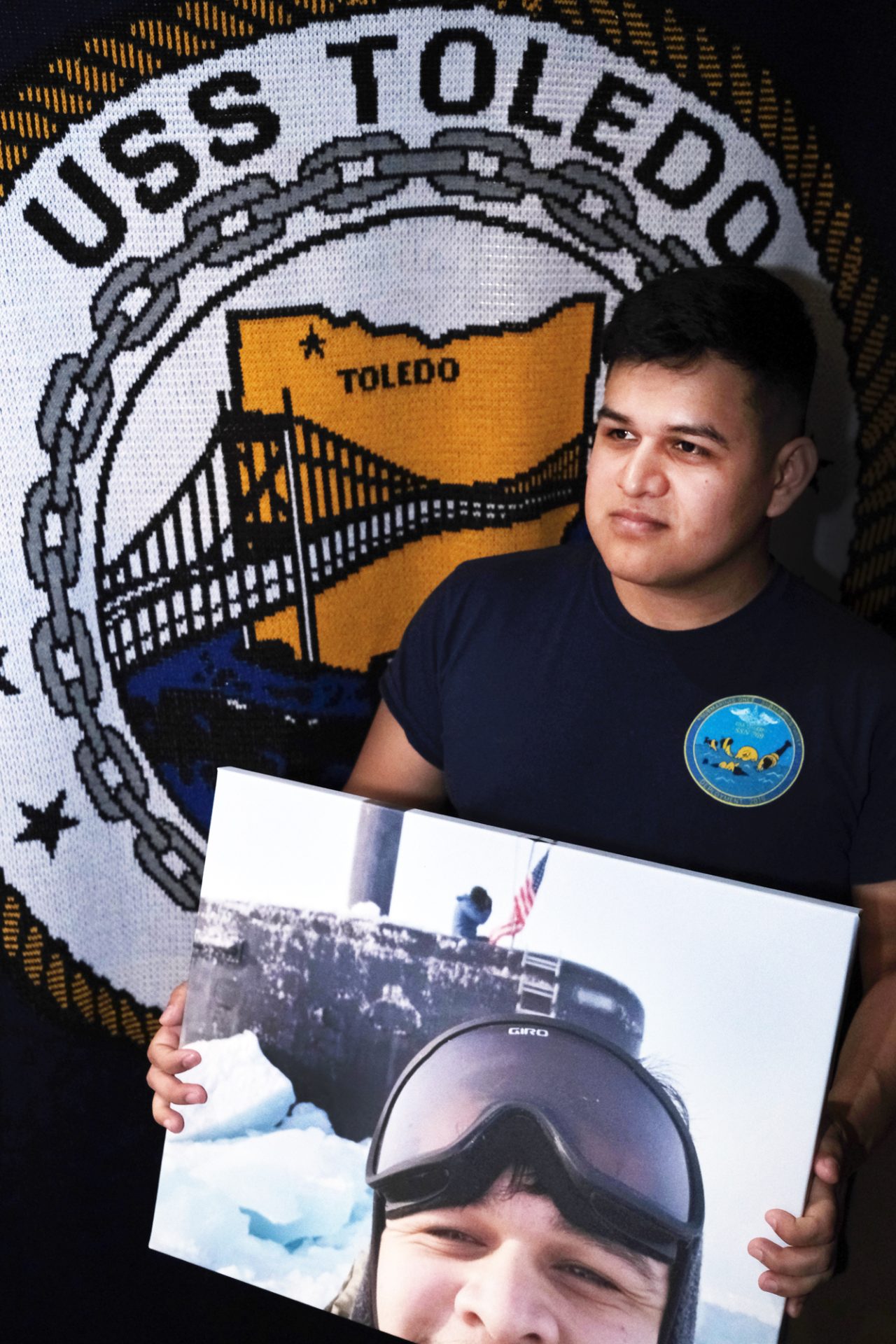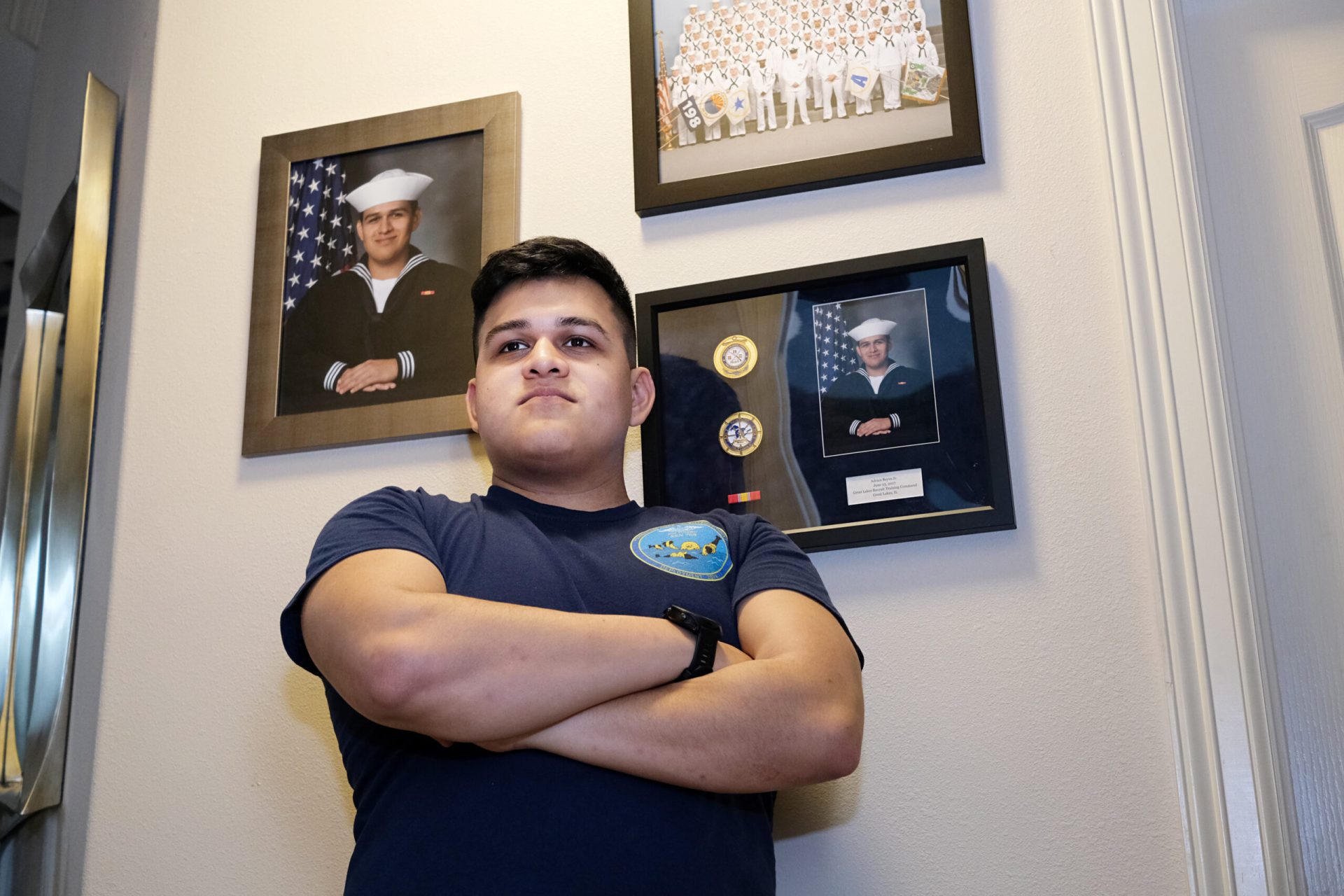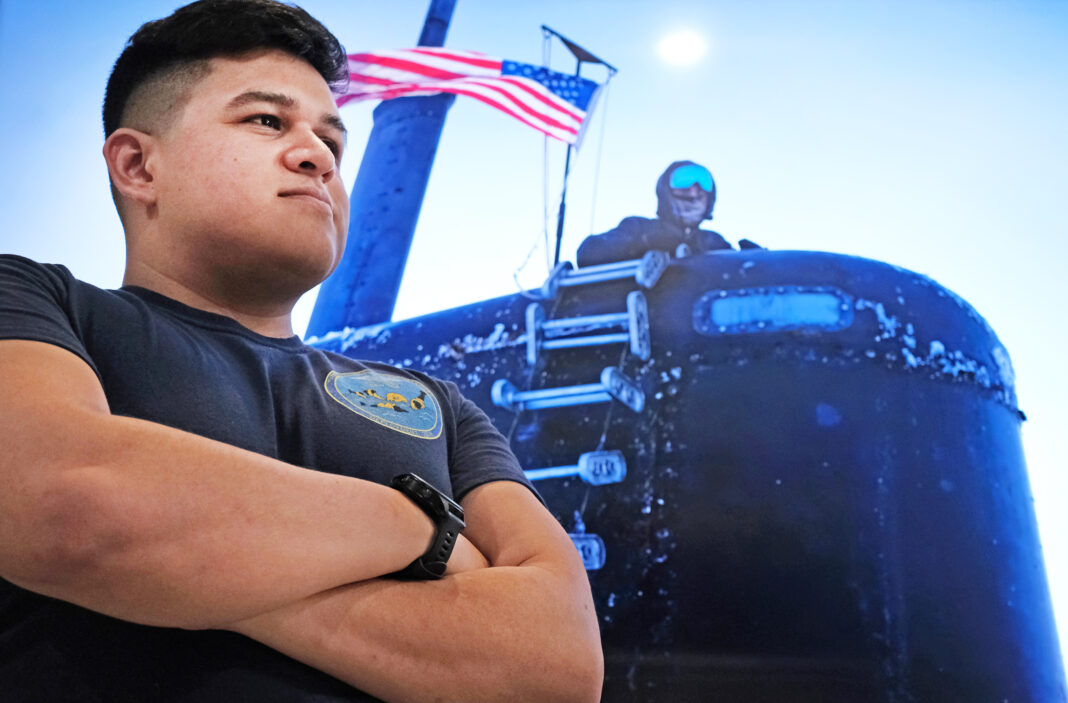U.S. Naval Petty Officer 3rd Class Adrian Reyes Jr. of Brownsville found out about the COVID 19 pandemic aboard the USS Toledo nuclear submarine when it resurfaced in late March 2020 and the worldwide emergency was already well underway.
Reyes is a nuclear electronics technician deployed aboard the USS Toledo to help keep its nuclear reactor functioning properly. He enlisted in the Navy in April 2017, opting for a six-year enlistment with an eye toward that job and the extra training it required.

He’s now on leave for the New Year’s holiday and arrived home Wednesday to visit family.
Reyes described learning about the COVID 19 pandemic after having just spent the previous month under the North Pole ice and being out of contact with the outside world from early February to late March 2020.
“When we pulled back in it was bizarre,” he said Thursday of returning to Naval Submarine Base New London in Groton, Connecticut. “You couldn’t go out anywhere. You couldn’t go to any restaurant, to get a haircut even. You could go to the grocery store and to work.”
Reyes said getting ready for deployment required six-months of initial schooling, another six months of more specialized training, “and then an additional six months of qualifying to do the job on an actual nuclear reactor.”
After that the sailors got orders to go out, either to a submarine or to an aircraft carrier, wherever they had volunteered to serve, he said.
“I myself went to the USS Toledo out of the base in Connecticut, in Groton, after completing training at the Naval Nuclear Power Training Command in Charleston, S.C.,” Reyes said, adding that he finished out the full deployment near Scotland.
“We came back to the United States in about September 2019 and got the news that (the Toledo) was one of the ships selected to do what was called IceX out to the North Pole, and so we started going underway a lot to prepare for this. Once we finally got underway it was early February 2020,” Reyes recalled.

“Yeah, life is just normal and we kind of lose communication with the outside world as we go under the ice because we can’t really surface to get any signal to transmit or to get any specific messages. … we ended up coming back a little early but when we exited from under the ice, it was all like coming back from not having internet to suddenly you have signal again and you’re getting all these messages.”
Reyes said the Toledo surfaced twice during the month it was beneath the ice, once to take on a YouTuber who shot a short video.
He said the 150 sailors who man the craft refer to it as “the boat.” They work around the clock in three eight-hour shifts, with beds occupied two out of the three shifts. Only men serve on the ship since it was built in the early 1990s, before women were fully integrated into the Navy, so it doesn’t have facilities for both sexes.
Ultimately COVID 19 did cause some sailors to not be healthy enough to report to their posts. Healthy sailors would then take up the empty posts since the ship was at sea and couldn’t just send sick sailors to the hospital.





